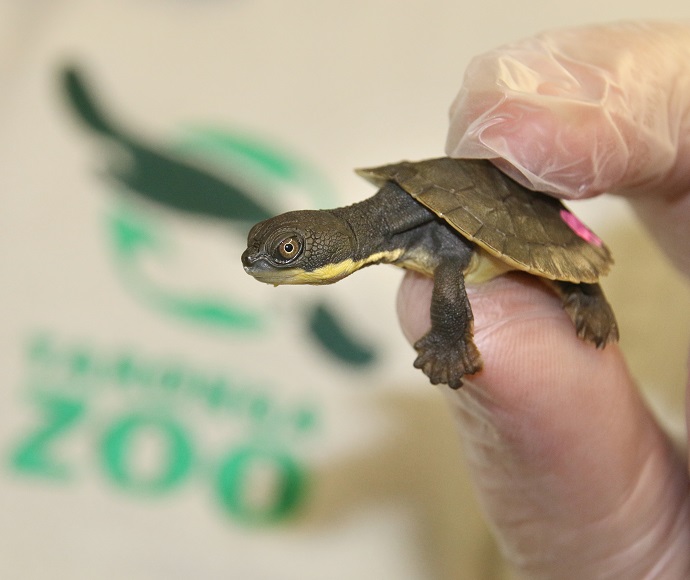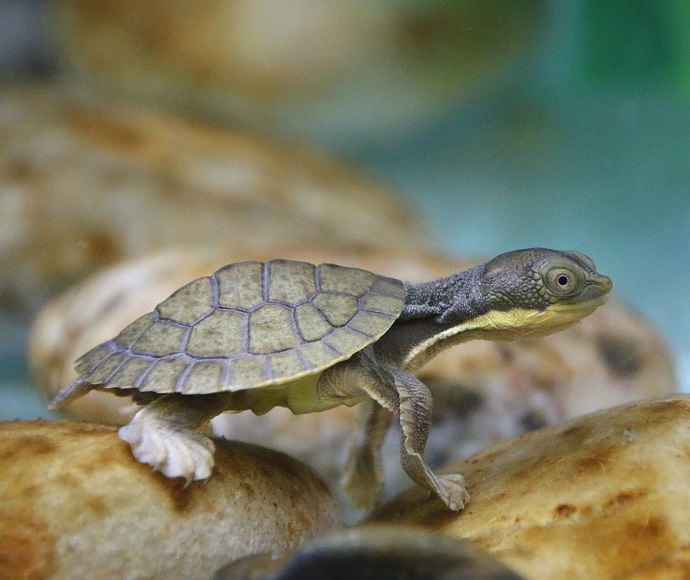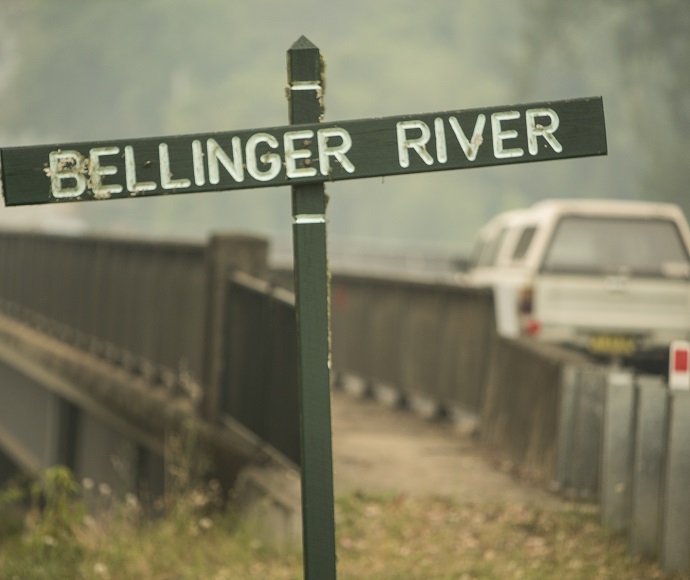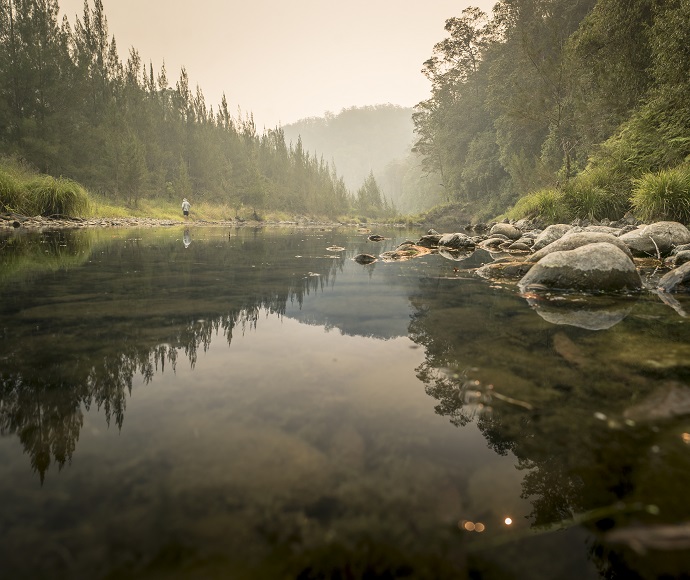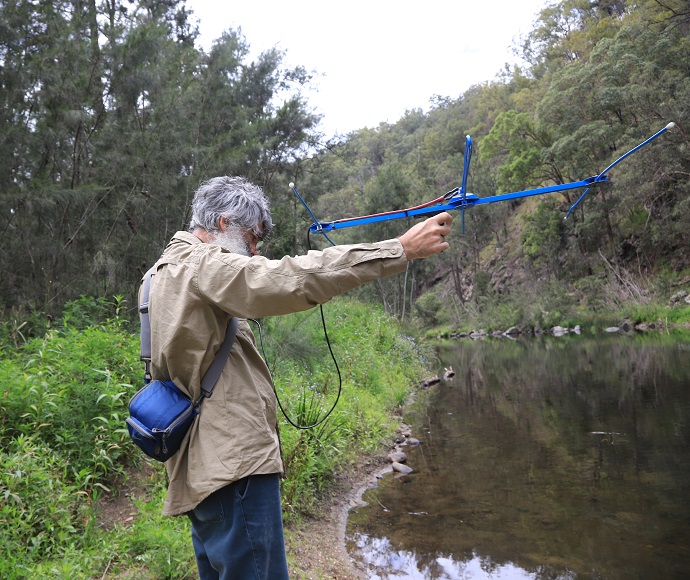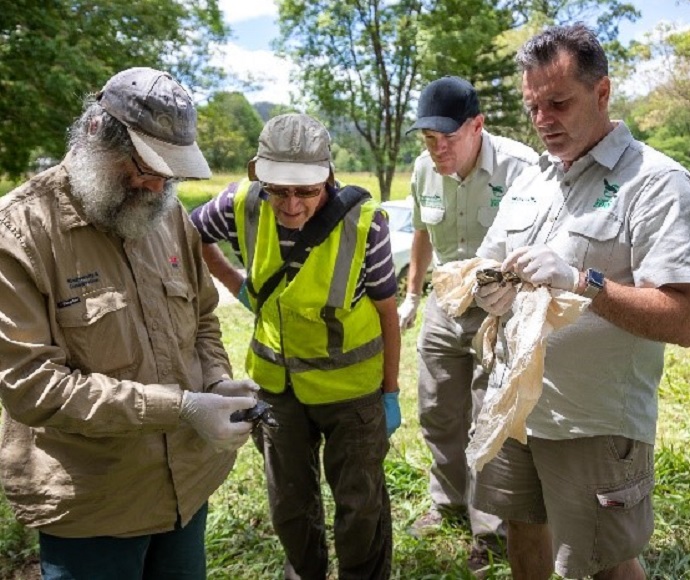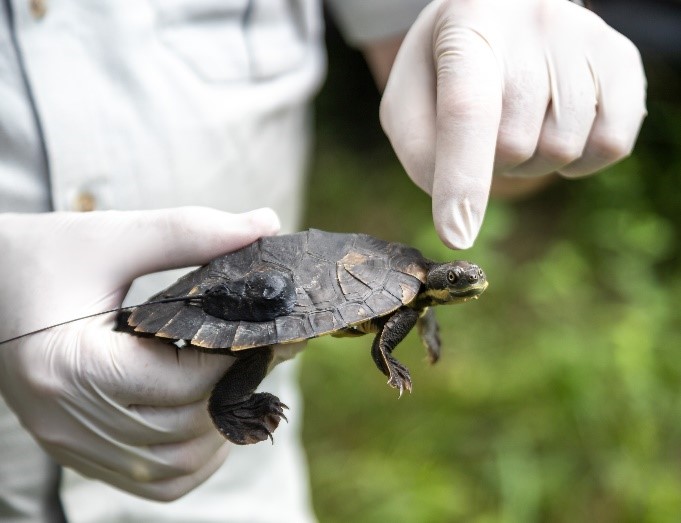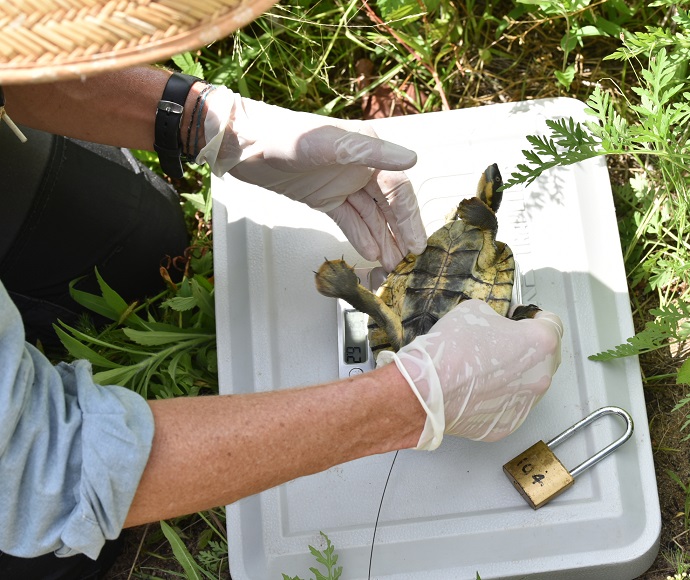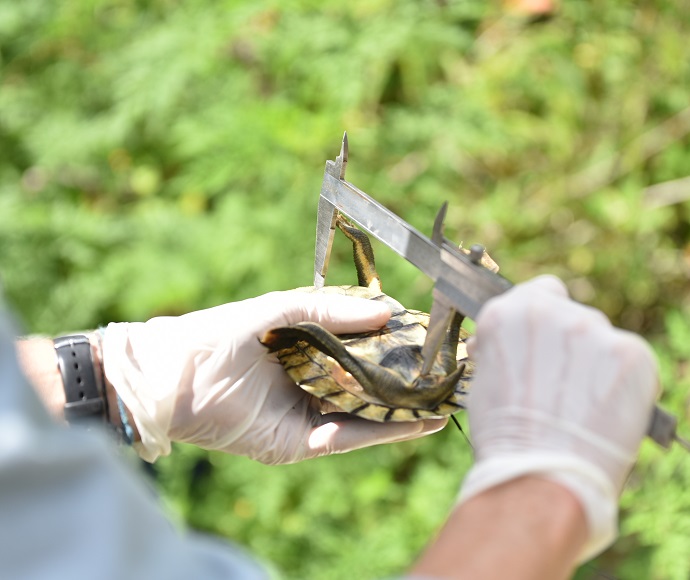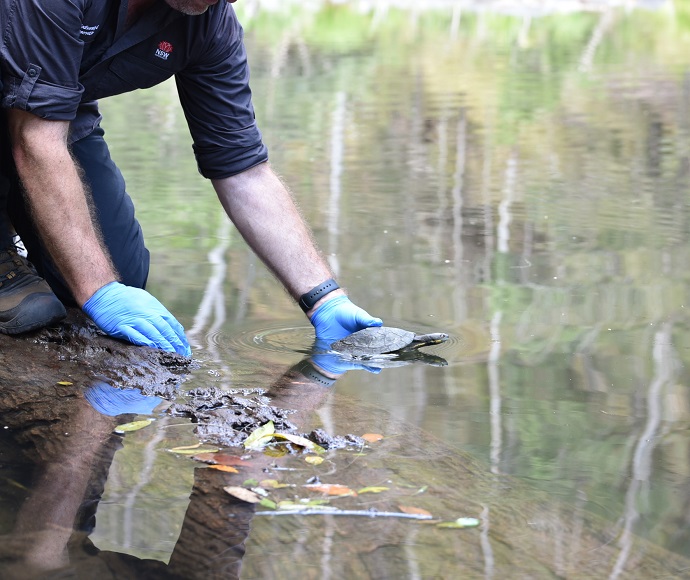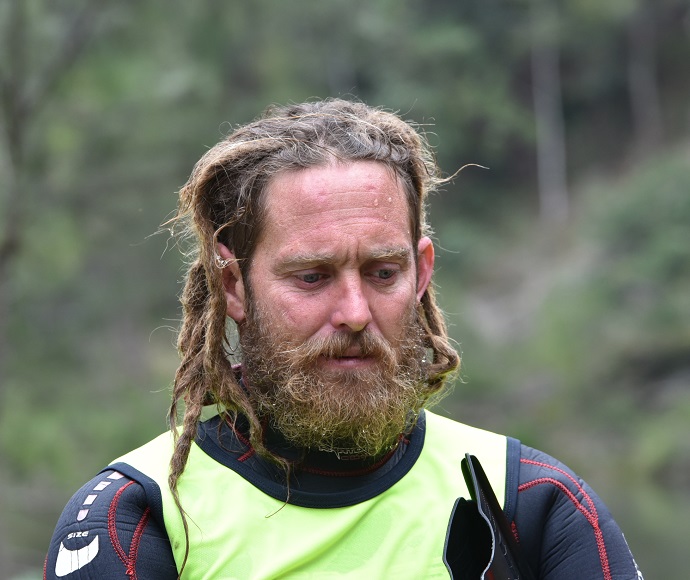Keeping up with the Bellinger River snapping turtle
We caught up with some of the people working to conserve the critically endangered Bellinger River snapping turtle to learn more about the species and what’s being done to try to protect it.
An update on the Bellinger River snapping turtle conservation project
The Bellinger River snapping turtle (Myuchelys georgesi) is only found in a 60-kilometre stretch of the Bellinger River in Northern New South Wales. This species was listed as Critically Endangered under the NSW Biodiversity Conservation Act 2016 after a virus, now known as the Bellinger River virus, caused mass mortality of the turtles in early 2015. An estimated 90% of the population was wiped out in just 6 weeks.
A rapid response by the NSW Government and partners during the virus outbreak had 17 healthy turtles placed into a captive breeding program managed by Taronga Zoo. The turtles are breeding, and the program has since expanded to include Symbio Wildlife Park.
Since 2018, the NSW Government has managed the trial release and monitoring of 82 captive-bred juvenile Bellinger River snapping turtles. Without this, the species is likely to become extinct in the wild.
The release program follows an approved translocation plan under the guidance of reptile and translocation experts, wildlife disease experts and zoo professionals. Radio transmitters are attached to some of the released turtles to assist with locating them during monitoring. The aim is to find out what happens to the captive-bred turtles after being released, if they have survived and if they are adapting in the wild. The transmitters also allow for the capture of the released animals to measure their growth rate, determine their body condition, and check their general health and exposure to the virus. Lessons from the release are informing the recovery program and any future releases of Bellinger River snapping turtles back into the wild.
There is still much that is unknown about this species and the virus that caused the mass mortality in 2015. Research is being undertaken by the NSW Government and partners to determine how the virus is transmitted, what might make this species susceptible to the virus and if the virus is still present in the river system.
Under the Saving our Species program, the NSW Government is funding several actions to conserve the Bellinger River snapping turtle, including:
- captive breeding
- regular monitoring of the remaining wild population
- restoring and improving habitat in the upper Bellinger River
- a citizen science program to track water quality across the catchment
- research into genetics, population dynamics and the virus.
Further information and updates on actions
The NSW Government’s Saving our Species program has undertaken regular surveys in the Bellinger River since the disease outbreak in 2015. There has also been a small number of surveys in the Kalang River over this time. The objectives of the surveys are to monitor long-term trends in the abundance and population structure of both the Bellinger River snapping turtle and Macquarie turtle (Emydura macquarii) and their hybrids and to assess individual turtle health.
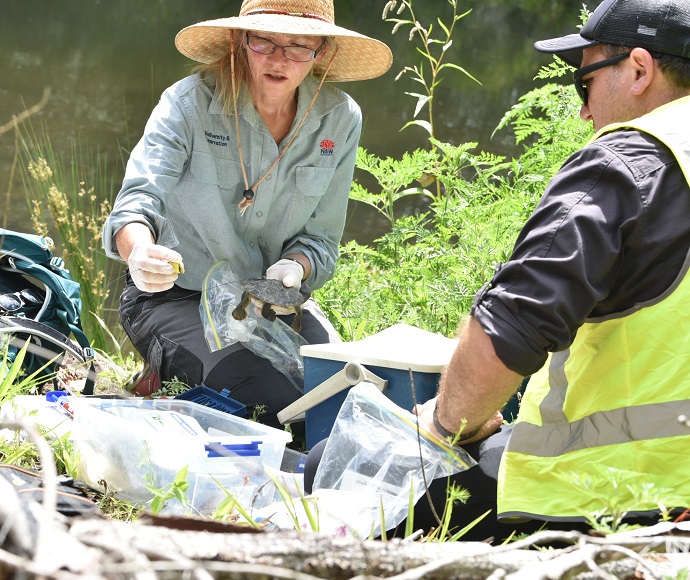
130 survey sites (a subset of which is randomly selected for annual survey) have been surveyed on one or several occasions. The sites are between the river’s headwaters in New England National Park and Lavenders Bridge in Bellingen township.
- 8 major turtle surveys have been conducted since 2015.
- A population estimated to be approximately 200 animals indicates a decline from 400 to 100 (November 2015 to December 2019) then an increase to 200 (January 2020 to March 2022).
- There has been no evidence of reproduction in Bellinger River snapping turtle in the wild since the mass mortality in 2015. For now, ongoing population recovery depends on continuing captive breeding and releases.
- Prior to mass mortality, population estimates from the Bellinger ranged between 2,200 and 4,500.
Taronga Zoo has been home to an insurance population of the Bellinger River snapping turtle since 2016, when the first 16 rescued animals were brought to the zoo. The breeding success within the program has surpassed expectations. Almost every mature female has produced a fertile clutch of eggs each year. This has resulted in the production of 30 fertile clutches of eggs over the first 6 years of the program.
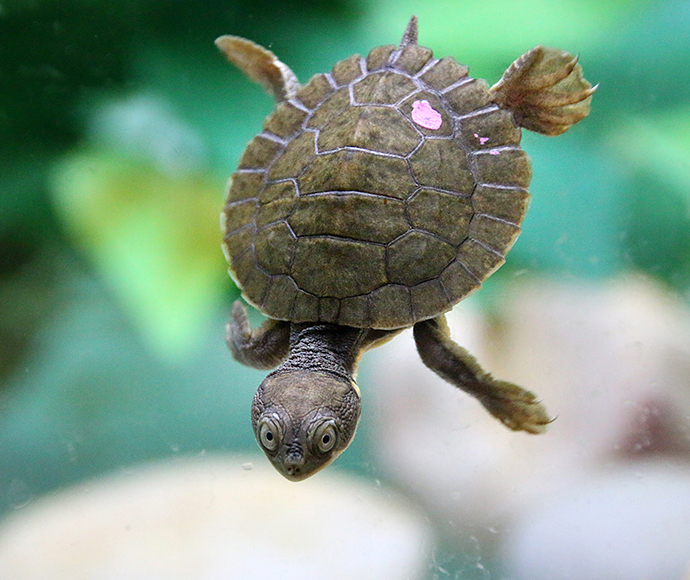
The 2021–22 breeding season has resulted in the highest number of offspring produced to date, with 60 healthy hatchlings emerging and thriving.
- The population at the zoo in early 2022 is 159 turtles, including the 16 original turtles and a range of young ones from hatchling to 5 years of age.
- The breeding program has provided 82 young turtles, at just under 2 years of age, that have been reintroduced to the Bellinger River since 2018. That number is expected to increase significantly in coming years.
- A large grant to expand the facility was received in 2021 under the Australian Government’s Environment Restoration Fund for Wildlife Rescue and Rehabilitation.
Symbio Wildlife Park acquired 19 juvenile Bellingen River snapping turtles in 2017. They have since developed and matured significantly. All 19 founding turtles are in great health, with monthly checks continuing to yield results of increasing weights and sizes.
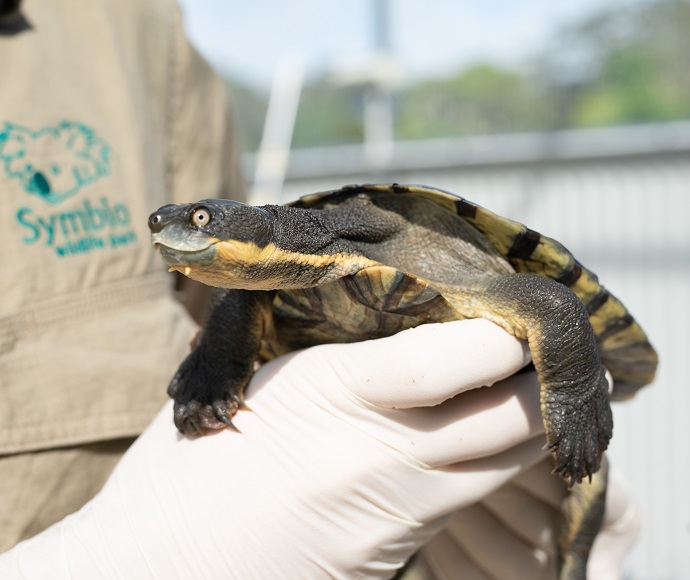
In recent months, keepers at Symbio have been observing courtship behaviour between individual pairings. These are promising signs for the future success of this program and ongoing great results for the species.
- Bellinger River snapping turtle approach sexual maturity at about 10 to 12 years of age. The females at Symbio are believed to be approaching 8 to 9 years of age. With females fast approaching breeding size and age and males displaying mating behaviour, it is anticipated that over the next few breeding seasons, the first clutches will be laid. Symbio Wildlife Park will be able to directly contribute to the repopulation of the species in their home in the Bellinger River.
Bellingen Riverwatch has been providing consistent water quality data in the Bellinger and Kalang catchments following the BRST disease outbreak in early 2015.
The priority focus is collecting scientifically valid and ongoing long-term water quality data to monitor river health, identify priority areas for management actions and educate the community and landholders on the impact they may be having on their environment.
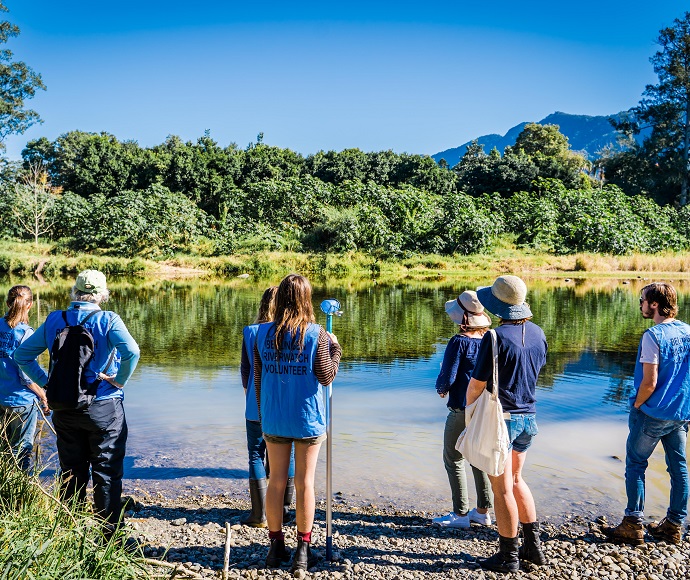
51 community members engaged in citizen science collecting water quality and macroinvertebrate data.
- 7,000 water quality tests have been conducted by Bellingen Riverwatch volunteers.
- 25 sites across the Bellinger and Kalang catchments are sampled monthly.
- With support from the NSW Saving our Species program and the Australian Government’s Bushfire Recovery Program for wildlife and their habitat, Bellingen Riverwatch launched a macroinvertebrate sampling program in 2021 to learn more about the resources available to Bellinger River snapping turtles throughout the Bellinger and Kalang catchments.
Learn more about Bellingen Riverwatch, visit their Facebook page and sign up to the River Health Newsletter.
Since 2015 Bellinger Landcare has been working with the Saving our Species program, landholders and land managers, the NSW Environmental Trust, North Coast Local Land Services and community members to improve riparian (streamside) vegetation condition along the Bellinger River, revegetate areas of historic clearing, undertake fencing and off-stream watering for cattle exclusion and improve the overall condition of riparian vegetation within the species range. Between 2015 and 2022 the Bellinger Landcare’s Bellinger River Rehabilitation Project has made progress towards several of these goals:
- 17 km of the Bellinger River is currently under active restoration within the species range, with works being undertaken on 15 private sites, New England National Park and council managed land.
- 59 volunteers contributed over 3,600 hours of volunteer weed control and bush regeneration. in addition to 4,100 bush regeneration hours undertaken by professional.
- 3,500 local rainforest plants were planted to expand the area of stream-side vegetation along the length of the river.
Learn more about Bellinger Landcare and the riparian restoration program by visiting the project website, visit their Facebook page and sign up to regular newsletters to find out about working bees and other activities here.
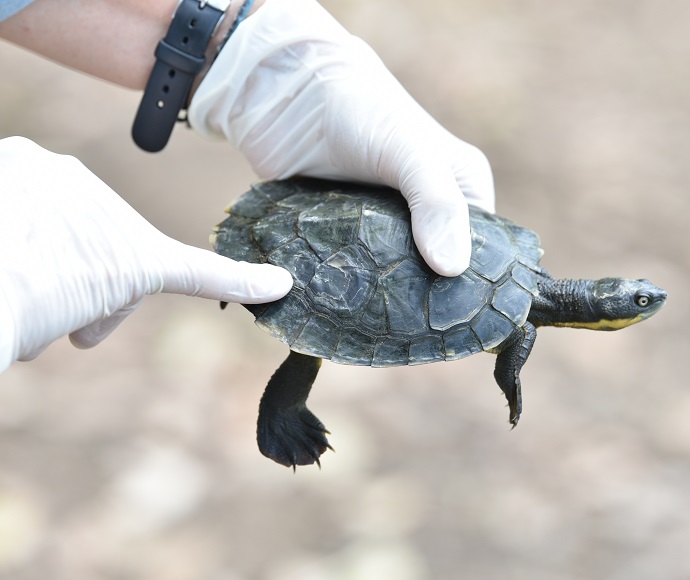
Research to assist recovery of the Bellinger River snapping turtle is ongoing.
University of Sydney PhD student Holly Nelson is using whole genome and genetic data to help inform and develop tools for the management of the species. The research aims to:
- explore whether the disease has caused changes in the species’ genetic structure, how much wild genetic diversity is represented in captivity, and identify levels of relatedness between individuals in captivity to inform breeding decisions
- develop genetic tools that can sex hatchlings and identify the turtles' presence in the river using water samples
- undertake comparative analyses of immune gene diversity between Myuchelys georgesi and Emydura macquarii to gain a better understanding behind the disease susceptibility of M. georgesi.
A research project by Western Sydney University PhD candidate Kristen Petrov has been completed. The research examined the interactions between the remaining Bellinger River snapping turtles and Murray River turtles.
Read about some of the other research being done on the Bellinger River snapping turtle in Aquatic conservation: Marine and freshwater ecosystemsVol 32, Issue 11 and Vol 31, Issue 12.
There are a lot of ways you can help save the Bellinger River snapping turtle:
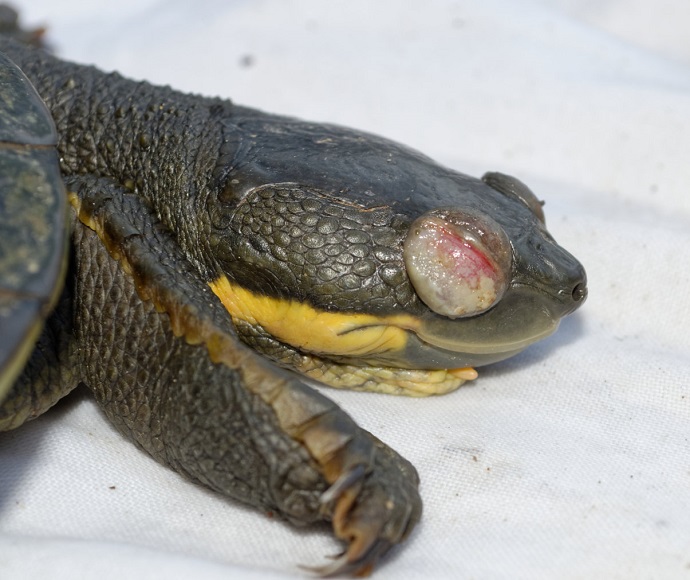
Report sick or dead turtles, by calling our Environment Hotline on 131 555.
- Contact WIRES Rescue Office for wildlife information and rescue advice on 1300 094 737.
- Report turtle sightings on our NSW Bionet webpage or the TurtleSAT website.
- Volunteer with Bellingen Riverwatch and take part in citizen science water quality monitoring on the OzGREEN Bellingen Riverwatch webpage.
The NSW Government, through its Saving our Species program leads the delivery of the Bellinger River snapping turtle project. The project relies on the contribution of the following project partners and stakeholders:
- Taronga Conservation Society Australia
- Symbio Wildlife Park
- Chessman Ecology
- Australian Registry of Wildlife Health
- NSW Department of Primary Industries (Virology)
- OzGREEN
- North Coast Local Land Services
- Bellinger Landcare
- Bellingen Shire Council
- Western Sydney University
- University of New South Wales
- University of Canberra
- Contractors and volunteers
- Landholders and the local community, including over 50 private landholders have provided the program with access to the Bellinger and Kalang rivers.
